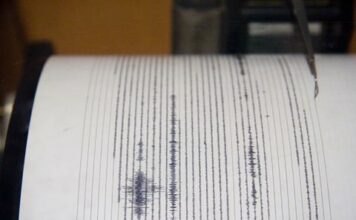For many women, poorly fitted bras may be the source of
unnecessary back and neck pain, muscle strain and more. Here’s how
to make sure you have the proper fit
n By Kelly Savio Staff Writer
If she had to guess, Jeannine Porteur DiVincenzo said 75 to 80 percent of women are either wrong or in denial … about their bra size.
“It’s very common. Women think they’re still a 36C like they were in high school, but they’re not,” said DiVincenzo, owner of Boutique de Lingerie in Hollister. “As our bodies change, we need to change our clothing, and that includes our undergarments.”
Common problems DiVincenzo sees in her shop include women whose breasts are “poofing out” over the top of their bra cups and who have the bra’s band stretched taut against their skin.
“Women wear the wrong size for years, and when they finally get so uncomfortable that they’re miserable, they finally come in and see us to do a fitting,” she said. “When we do put them in the right size, they have two reactions. First, they say, ‘Wow! That feels so much better!’ and then they say ‘Oh my god, what do you mean I’m a 40DD?’ But it’s not about size, it’s about comfort.”
The benefits of a comfortable bra can go deeper than finally wearing something that’s not too tight or the wrong cup size. There’s a chance it can alleviate muscle strain and pain, said Dr. Nicole Conragan, a chiropractor at Community Chiropractic in Morgan Hill.
“I think women come in with back and neck pain that are caused by a variety of things, but it’s very, very possible wearing the wrong undergarments is one of the contributing factors, especially for larger-breasted women,” she said. “We do see a lot of women with pain in the area where a bra crosses the back. If you’re uncomfortable, you’re going to try and compensate by changing your posture and putting strain on muscles. That can certainly lead to pain.”
Department stores and lingerie specialty shops frequently have employees with special training to help customers select a bra that fits properly. Several brand name bra companies, such as Bali, also have tools or “bra size calculators” on their Web sites to assist customers.
For women who are uncomfortable having someone give them a bra fitting, there are several things to keep in mind when selecting the right undergarment.
The first rule of thumb for trying on bras is to fit them on the second hook, DiVincenzo said. That way, women can gain or lose a little weight without having to buy a new bra. They’ve allowed for weight fluctuation already and can either tighten or loosen their bra by changing hooks.
“Breasts should also be separated by the cups of a bra, not pushed together. There are novelty bras for pushing things together, but that’s something else altogether,” she added, laughing. “The middle section between the cups should lie flat to the breast bone, and underwire should sit on your ribs. You should be able to fit two fingers under the back of your bra, but no more than that. You don’t want to be able to stick your whole fist under there.”
Another tip DiVincenzo gives many larger-breasted women is to start the day with their bra straps as close to their neck as possible.
“It feels weird at first, but you’ll get used to it,” she said. “The bra straps will move and shift during the day back toward the middle of the shoulder, but by starting them somewhere else, you’ll help avoid those saddle indentations you can get from having the straps in the same place all the time.”
Above all, DiVincenzo said, don’t worry about the size of bra you wear, worry about how you feel in the bra.
“Who’s going to know what size you are? No one,” she explained. “But people do know when you look uncomfortable.”











